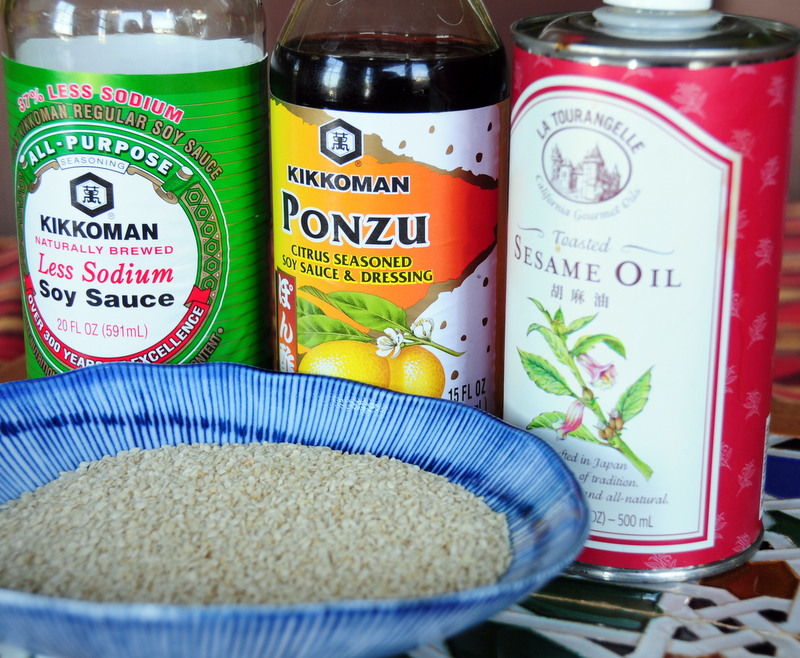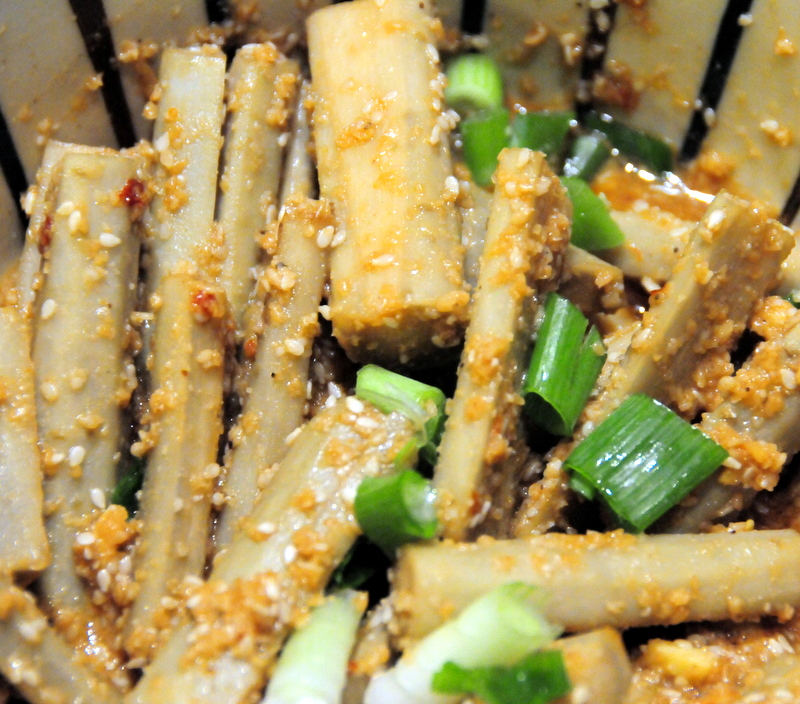Last weekend we went shopping at the San Francisco Japanese Center for some hard to find Japanese food products. I was specifically looking for fresh ramen noodles. I wanted to try to reproduce at home the delicious ramen noodle soup I had at the Tuesdays-and-Thursdays-only food stall located in front of the Ferry Plaza. Stay tuned, as I’ll feature more about this amazing place soon!
While perusing the isles at Nijiya Market, I spotted this bag of ultra fresh burdock roots, which are called gobo in Japan. This root is deservedly revered there. I like burdock a lot but it is difficult to find them freshly harvested. When they are not that fresh, they tend to get dark outside and a bit limp. When peeled, instead of having an off-white colored flesh, it looks grayish instead. That is not cute. These from Nijiya looked like they had just come from the field, just the way I like it.
People always stare at me when I’m carrying my fresh burdock home. Even in San Francisco, where we have a large Asian population, I still get strange looks. I don’t get it. Is it just me? I wonder why… When I buy my baguettes at the shop nearby nobody gives me that look. Clarence, too, was extremely quizzical about these very long slender roots. Look at him here acting funny:
Whenever I eat this dish I think of Middle Eastern recipes that use tahini, such as humus or babaganush. Yet, this gobo salad is a complete departure from how sesame paste is used in the Mediterranean and Middle East. People are so creative! I love it the way one culture will take an ingredient common to another and come up with such deliciously novel ways to cook with it. Gobo salad is a perfect example of this.
Burdock root is crunchy with a nice sweet, herbal and earthy flavor. You can serve this preparation as a side dish or as a snack with beer, a crisp white wine or even a vegetable-friendly red, such as pinot noir.
gobo salad AKA burdock root salad
2 long very fresh burdock roots (each about one meter long)
¾ cup sesame seeds
1 tsp minced fresh ginger
2 tbsp ponzu/soy sauce blend
1 tbsp light soy sauce (shoyu)
1 tbsp mirin
1 tsp rice vinegar
1 tbsp garlic chili paste
1/3 tsp sugar
1 whole scallion chopped
2 tbsp toasted sesame oil
1 tbsp water
Peel and cut gobo roots into two-inch thick sticks, making sure they are roughly the same thickness. Plunge them in cold water for about 5 minutes. Bring a pot of lightly salted water to a boil. Add burdock root and cook for 10 to 12 minutes until tender. Drain and set aside.

some key ingredients for burdock root salad: soy sauce, ponzu, toasted sesame oil and fresh sesame seeds
Place sesame seeds in a frying pan and lightly toast them. Shake pan continuously for even toasting and to prevent burning, about 3 minutes. Transfer to food processor and process it for few seconds just to partially break the seeds. Transfer sesame seeds to a bowl, and mix in ginger, ponzu mix, soy sauce, mirin, sugar, rice vinegar and water. Add sesame oil, give it another stir, then taste. The sauce should be smoky, tangy, salty and a bit sweet. Adjust flavors if needed.
Pour sauce over burdock roots and garnish with scallions. This is an amazing dish!
obs: If you don’t have ponzu you can replace it with equal amount of lemon juice
Here’s another version of this salad.


Comments on this entry are closed.
I wonder if these taste at all like the taro roots we eat in the near east
Joumana,
Burdock roots are not starchy as taro, the texture is very crunchy it is sweet. here’s an excerpt from this site:
Burdock root is the root of the burdock plant, in the genus Arctium. Generally, burdock root is harvested from Greater Burdock, Arctium lappa, although other species of burdock may be used as well. In addition to the young roots, the leaves of some burdock species are also edible, and they may be used in salads and other dishes. Burdock has also traditionally been used medicinally, especially as a purifying agent.
The burdock plant is in the thistle family, and produces flowers and burrs which strongly resemble thistles as they mature. The plant has green leaves which hug the ground before shooting up tall stalks of leaves and small purple flowers. The flowers develop into burrs which are notorious for sticking to clothing and fur with immense tenacity. This trait has led to the wide distribution of burdock all around the world.
Cheers!
H